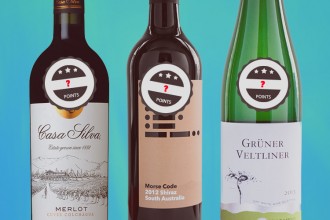When it comes to wine, Amarone della Valpolicella belongs to the same coveted rank as the august Barolo and Brunello. It’s one of Italy’s greatest wines and in excellent vintages, is the stuff of legend. If you’re serious about wine, or at least serious about good wine and have never tried Amarone, do yourself a favor and buy a bottle, stat. Be forewarned. It will set you back more than a few bucks. The entry level price range hovers around $50 or so, but parting with several Hamiltons isn’t much to ask when you consider the complexity, richness and concentration you’ll encounter in an Amarone.
Valpolicella is located near the city of Verona, in the Veneto region of north-eastern Italy, and here Amarone is king. It’s produced from three grapes: Corvina, which makes up the lion’s share of the blends, Rondinella and Molinara. Although other grapes are allowed, in practice they are seldom used. For a dry wine, it’s incredibly rich, thanks to the way in which it is made. Grapes destined for Amarone are harvested at maximum ripeness. They are then partially dried in lofts for around three months during the course of which they lose water weight and gain the concentration of sugars and phenolic compounds that are the basis for the magic. After this appassimento or drying process, the grapes are slowly pressed and the juice is fermented to complete dryness over a period of weeks. Finally, Amarone is aged before it ever hits shelves, two years for normale and four for riserva, but it can continue aging in bottle for decades for anyone patient enough to wait.
But what does it taste like? Dried fruits, like cherry, raisin, fig, licorice and spice. They can be boozy; creeping up past 15% alcohol isn’t uncommon, but they’re round and generous sip after sip.
Also made in Valpolicella are the eponymous dry reds of the region, as well as the ripasso and recioto styles. Recioto is made in the same way as Amarone, but the grapes are dried longer and the final wine is sweet, with both still and sparkling versions available. Ripasso is a real treat if your Amarone habit is threatening to break your bank. Valpolicella is passed through leftover Amarone skins then fermented into a wine that bears some of the character of the Veneto’s sovereign and is available for a fraction of the price.
Sure, Amarone is expensive, and that in of itself can be off-putting. However, a great Amarone is a thing of both power and beauty and every wine lover, whether a casual drinker or hardcore enthusiast, deserves at least a few bottles of Amarone in life.









How do I order Amorone?
I must agree regarding the value and quality of this wine! My first experience with Amarone was in 2000. I have been hooked ever since. I have purchased this wine by the case and denied myself other luxuries just to ensure I have a bottle of this wine in the house. Thank you for a well written article!
Found Amarone about 20 years ago. By far my favorite wine. Have introduced Amarone to many of my wine friends. Even white wine drinkers. I take credit for forcing Amarone Vineyards to release their wines before the usual 10 years. They are trying to keep up with my consumption.